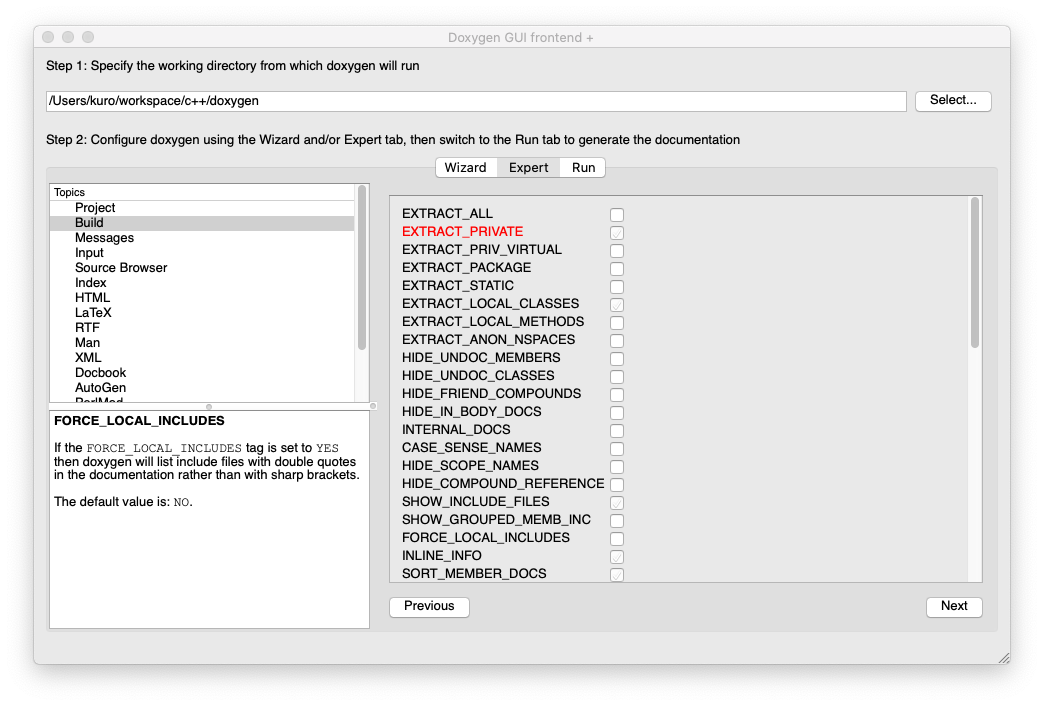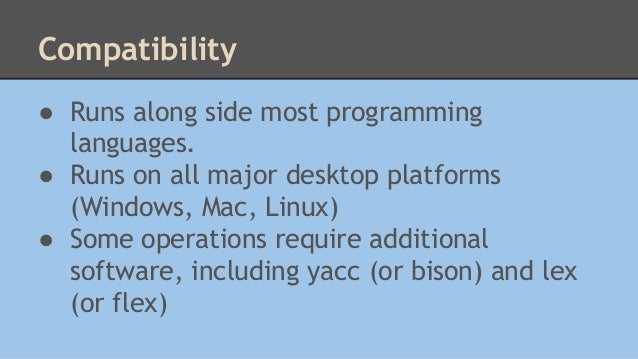

enabling HTML_DYNAMIC_SECTIONS will make doxygen hide certain content (like graphs) in the HTML by default, and let the reader expand these sections on request.

To make the HTML output more interactive, doxygen provides a number of options that are disabled by default: To change the hue, saturation, and gamma correction of the colors respectively.įor your convenience the GUI frontend Doxywizard has a control that allows you to see the effect of changing the values of these options on the output in real time.īy default doxygen shows navigation tabs on top of every HTML page, corresponding with the following settings: To change the overall color of the HTML output doxygen provides three options The next subsections describe some aspects that can be tweaked with little effort.
DOXYGEN LIST HOW TO
The section XML output show how to generate whatever output you want based on the XML output produced by doxygen. The section Layout show how to reorder and hide certain information on a page. The section Minor Tweaks discusses what to do if you want to do minor tweaking to the look and feel of the output.
DOXYGEN LIST MANUAL
manualtest Manual Testing section contains a collection of manual menutest Menu exporttest Import/Export following shows a sample of a Java unit test class with unit test documentation and manual testing instructions.Doxygen provides various levels of customization. The following is a subset of the solution we implemented with Doxygen groups/sub-groups.Ī separate manual-test.dox file is defined to create a top-level group and several sub-groups under which specific manual tests are collected. I wanted to document user testing procedures as close as possible to their corresponding unit tests or groups of unit tests. I remembered coming across this question when I was looking for a similar solution. (I'm currently working on doing something similar to get Doxygen to nicely document Google Tests, also in the context of a project for a highly-regulated industry.) These are hacks, and you'd have to fiddle around with Doxygen quite a bit to get it to handle this case nicely, but I hope these suggestions help somewhat.
DOXYGEN LIST CODE
dox documentation in the source code documentation (or vice-versa). You can use various Doxygen commands to link back to the documentation of the actual source code, and you can also insert a copy of the. dox files would contain documentation generated from corresponding. dox files from your code before calling doxygen. Write a "Doxygen runner" that would automatically generate.(One odd behavior I dislike is that the \code command seems to strip leading spaces, so you wouldn't get indentation to work correctly.) I'm not sure where Doxygen would put these comments or how they'd look they might be pretty ugly, unfortunately. Then write a filter (see FILTER_PATTERNS) to replace this string with \code \endcode where is the next line of code that the filter sees. Put some sort of special string (say, for instance, DOXY_INLINE_CODE) in the Doxy comments that should be associated with a single line of code.There are two ways I can think of for accomplishing this:

I'm quite sympathetic to your plight, but as far as I can tell, Doxygen really is only designed to document specific code-objects (files, classes, namespaces, variables, etc) rather than arbitrary lines of code.Īt the moment, the only possibility I can think of for circumventing this shortcoming is to generate comments that include the actual code that you're wanting to document via the \code command. Void ()Īny better ideas for implementing in-line test step documentation? I don't care so much about the steps not appearing in the test list, we can live with just the references to the functions. Void ()Ī method for testing doxygen method documentation. ** A method for testing doxygen method documentation code that may or may not be in sync with header Of note, I'm using the RTF output format. I'm trying to use doxygen to document my unit tests, but I'd like to document them in-line with the code instead of in the test header to reduce copy/paste errors when making similar tests.


 0 kommentar(er)
0 kommentar(er)
